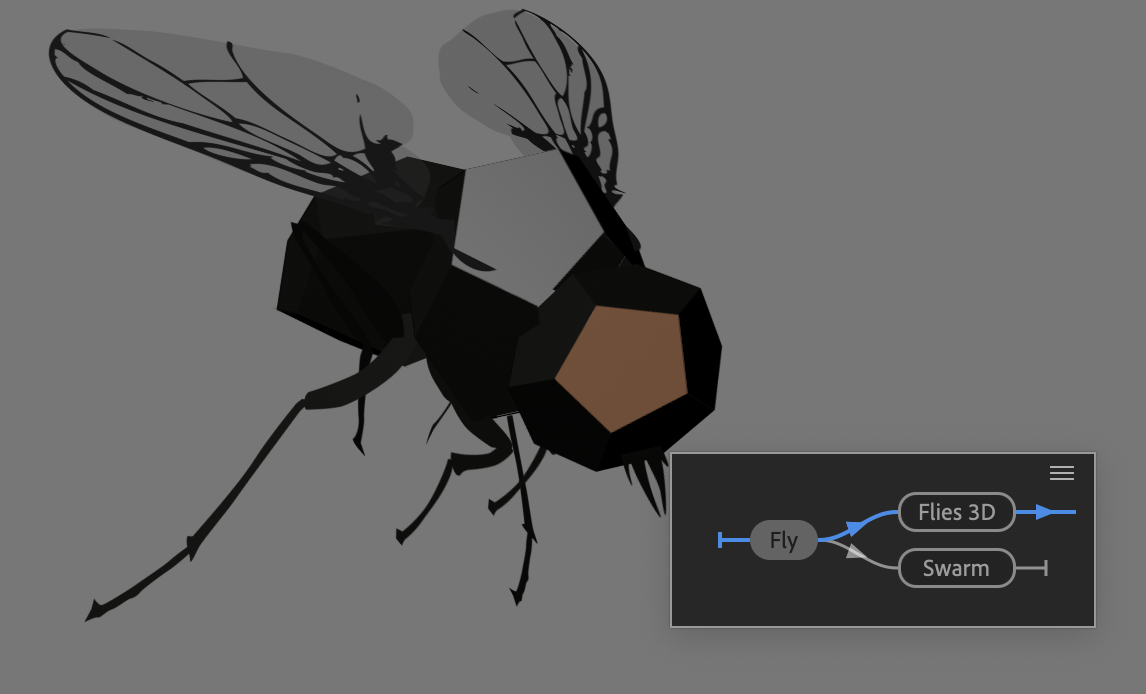The details of the next release of Adobe After Effects are now public. AE CS4 features 3D object rendering (objects come in via Photoshop CS4 3D documents) and a full seat of Mocha AE. But my favorite new feature is more subtle than that. It fixes perhaps the biggest problem with After Effects. And out of the box, it's backwards.
In order to do real compositing work in After Effects, you frequently must precompose, creating nested relationships between compositions that can become quite complex and deep. Navigating these relationships can be the least enjoyable aspect of working in After Effects. Taking over someone else's After Effects project is notoriously difficult for this reason. As a VFX supervisor, a good amount of my time looking over an After Effects compositor's shoulder was spent watching them search desperately for which tab, which alphabetically-sorted comp, contains "the place where I did that."
After Effects CS4 adds a new feature for rapid, graphical navigation of nested comps. It's called the Mini-Flowchart, and it resembles the After Effects Flowchart View that was previously the only visual way of browsing the relationships in an After Effects project. No one ever uses the Flowchart View, because its half-implemented status punishes you for doing so. But it's a good idea, and the Mini-Flowchart extracts some of the best things about it. It's a little slice of nodal goodness integrated seamlessly into the slick new CS4 user interface.
But did I mention it's backwards?
As you can see, I have four source comps that I'm using in Main Comp. I then have two different output comps, HD and SD. But if you're like me, the flow is backwards here. The sources are on the right and the outputs on the left. The arrows show that images flow from right to left.
The theory, I’m told, is that you might perceive your After Effects comps as nested folders, and like the NEXT-inspired column view in OS X, your top-level directories are on the left and your deepest-nested assets are on the right. The problem is, nested comps are not files and folders. You can have a footage item that is deeply-nested from one comp and used directly in another. You can't do that with files and folders.
But more importantly, compositing is not storage. It's defining a process. After Effects projects are lists of instructions, and the ones that happen first belong on the left, the ones that happen last belong on the right. At least in countries that read left to right!
Luckily, if you agree, you can fix this easily enough. Just click the wing menu and select Flow Left to Right.
Much better. Source on the left, output on the right. Arrows flowing right to left. If, like me, you hope that AE will someday do more with nodes, this would be a good change to make (you only have to do it once). Obviously, nodal systems tend to flow left-to-right and/or up-to-down. It's a bummer to me that Adobe chose right-to-left as the default—it feels like it puts more distance between me and a nodal future for After Effects.
But whether you roll left-to-right or right-to-left, the Mini-Flow is wicked awesome. You access it with a button in the Timeline, but better still you can bring it up with a quick tap of either Shift key. You can then easily navigate it with the arrow keys, jumping into any comp by hitting Enter. Trust me, before long you'll wonder how you lived without it.
UPDATE: "An unordered, approximately comprehensive list of new features in After Effects CS4" can be found here.
Visit the ProLost Amazon Store for upgrades to Adobe CS4 Production Premium and support ProLost.
Update 2021-08-30
Thirteen years later, I still love this feature, still insist that it ships backwards, and felt the urge to mention that the shortcut key is now the Tab key, making it even easier to access, even with the dedicated button having been removed..
I just want to fly though my After Effects comp structure.



